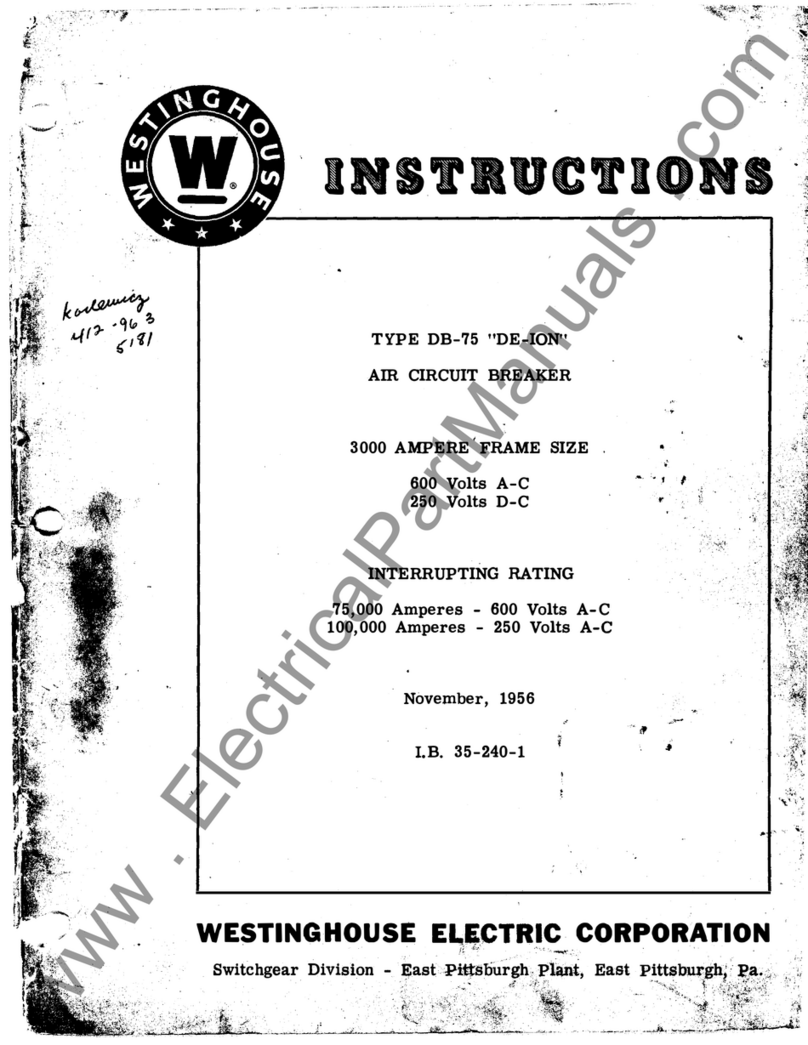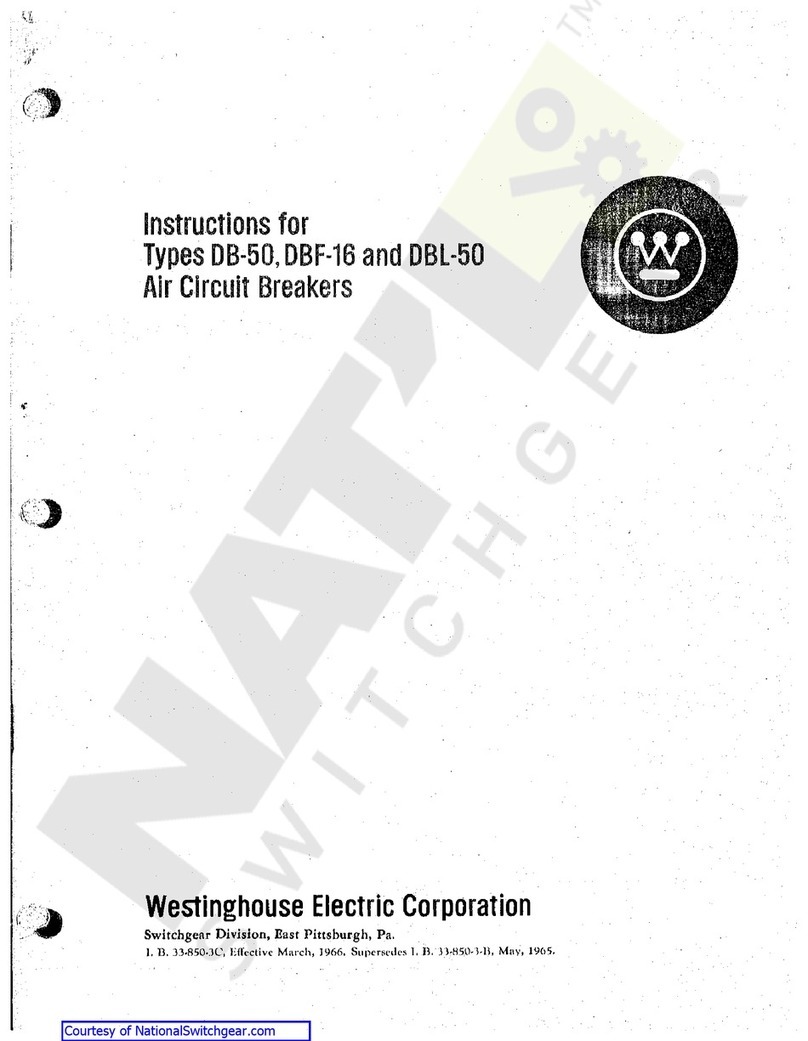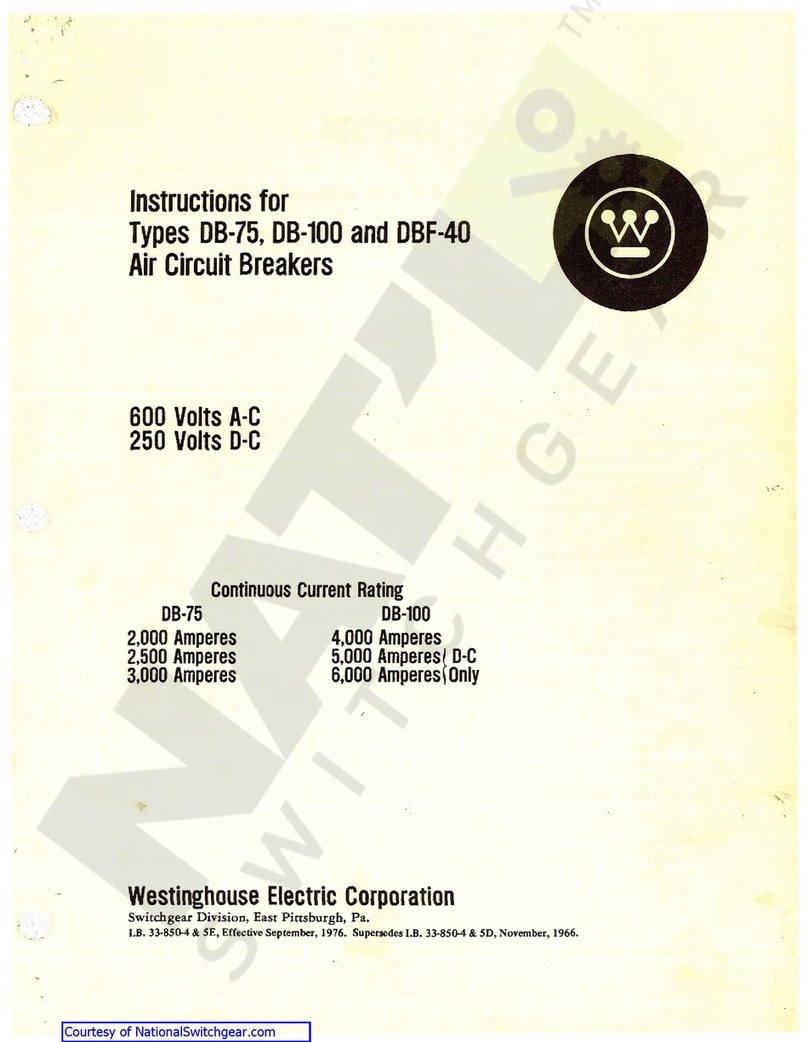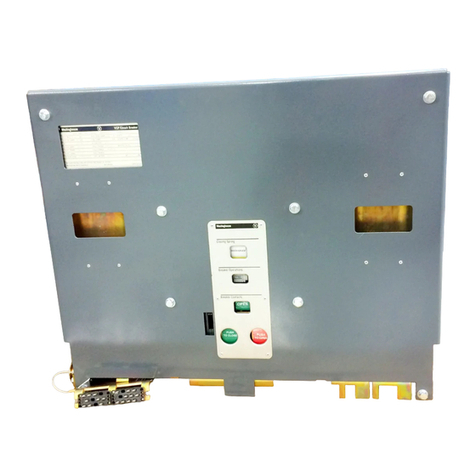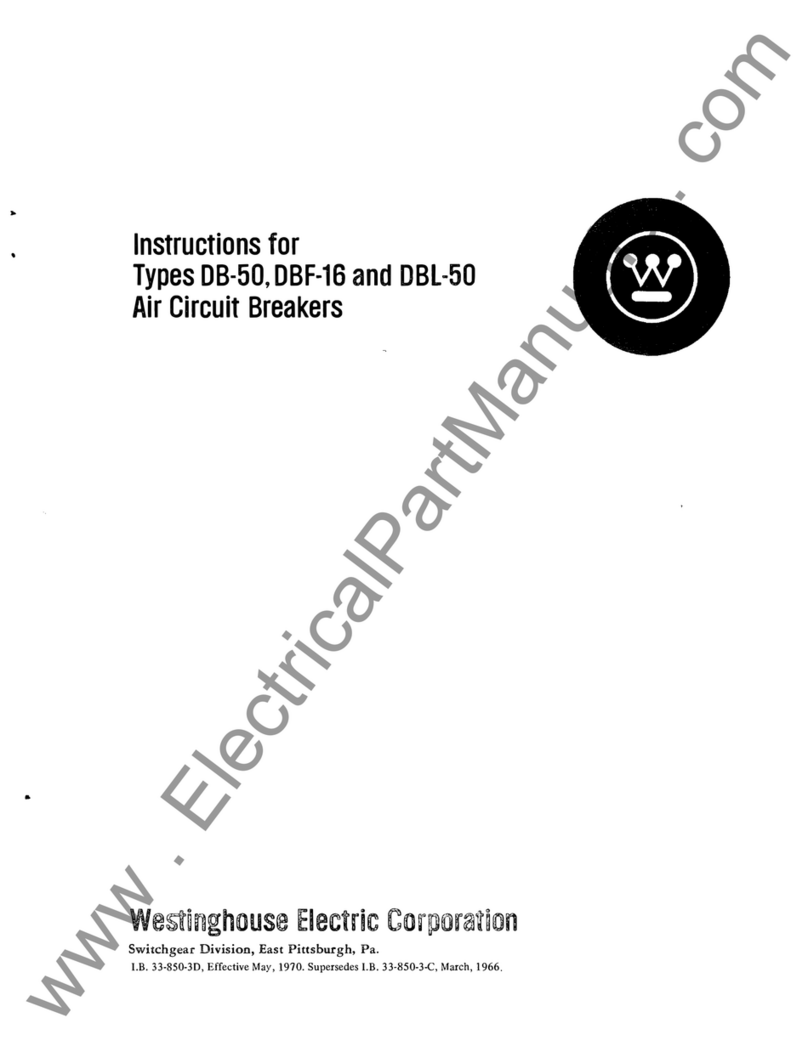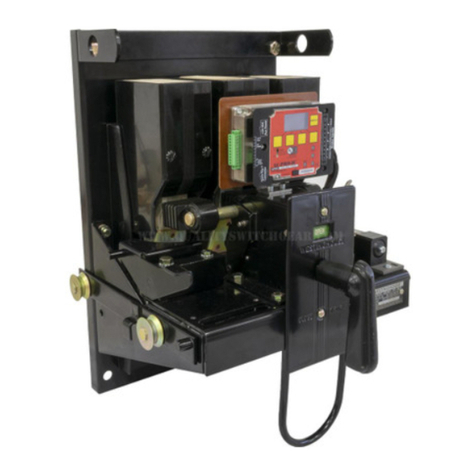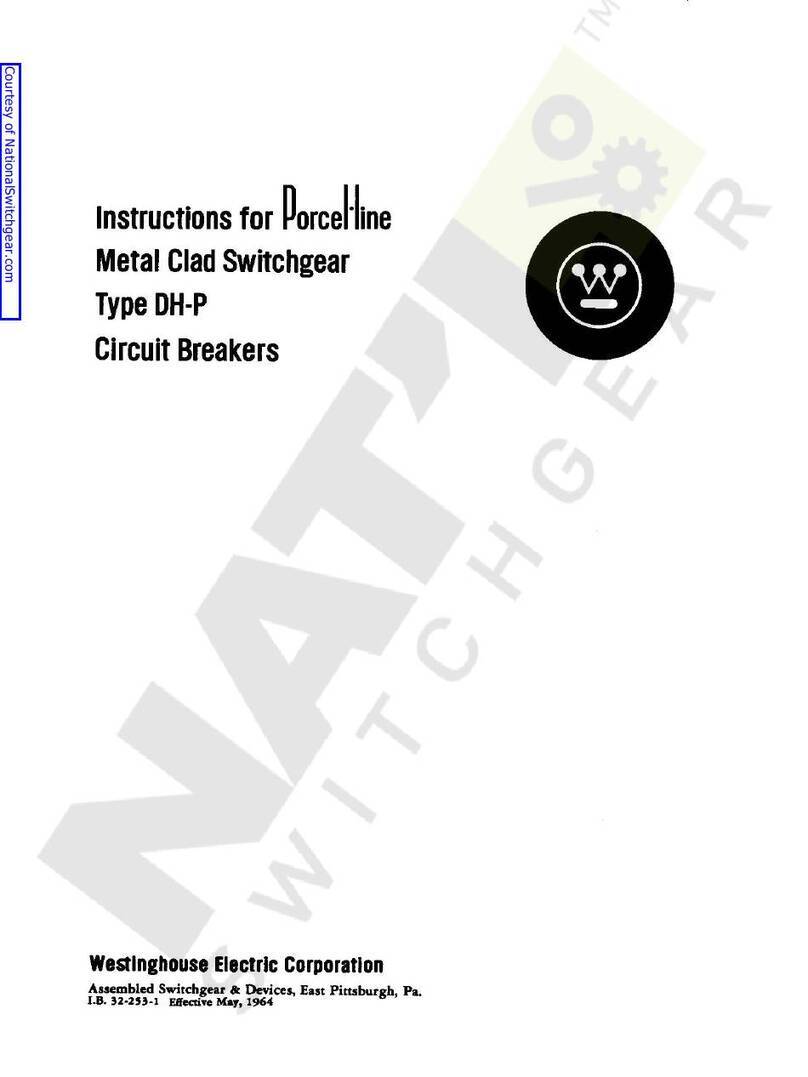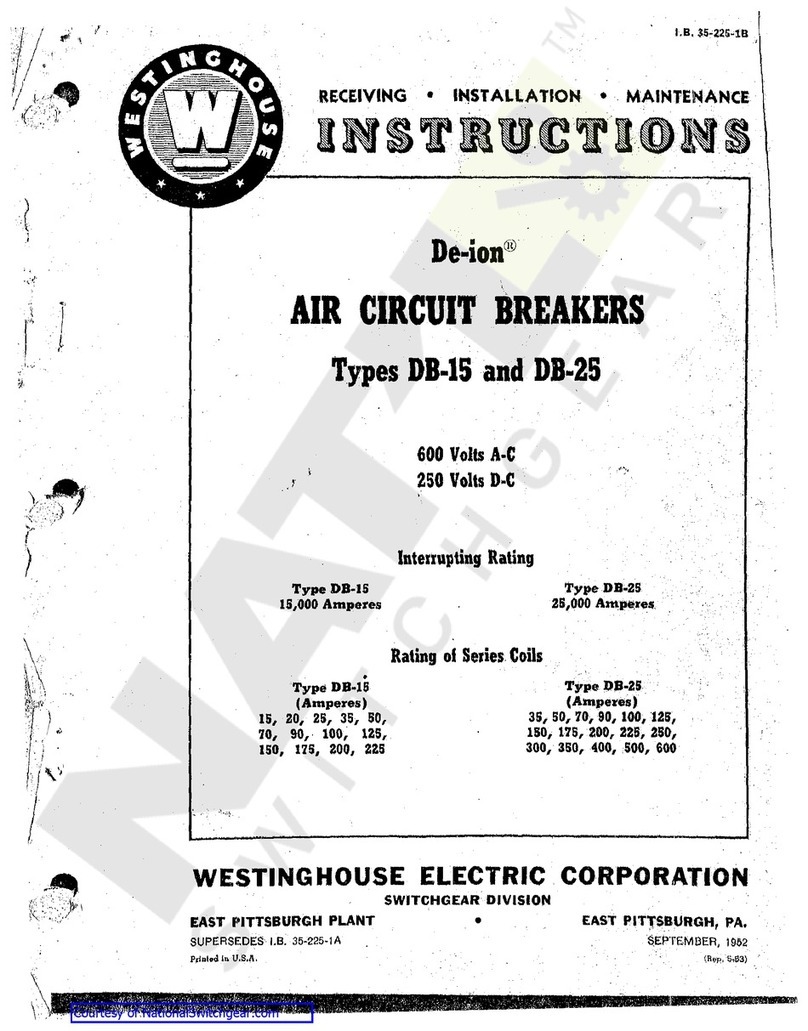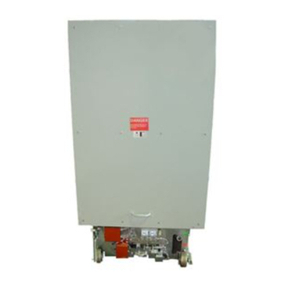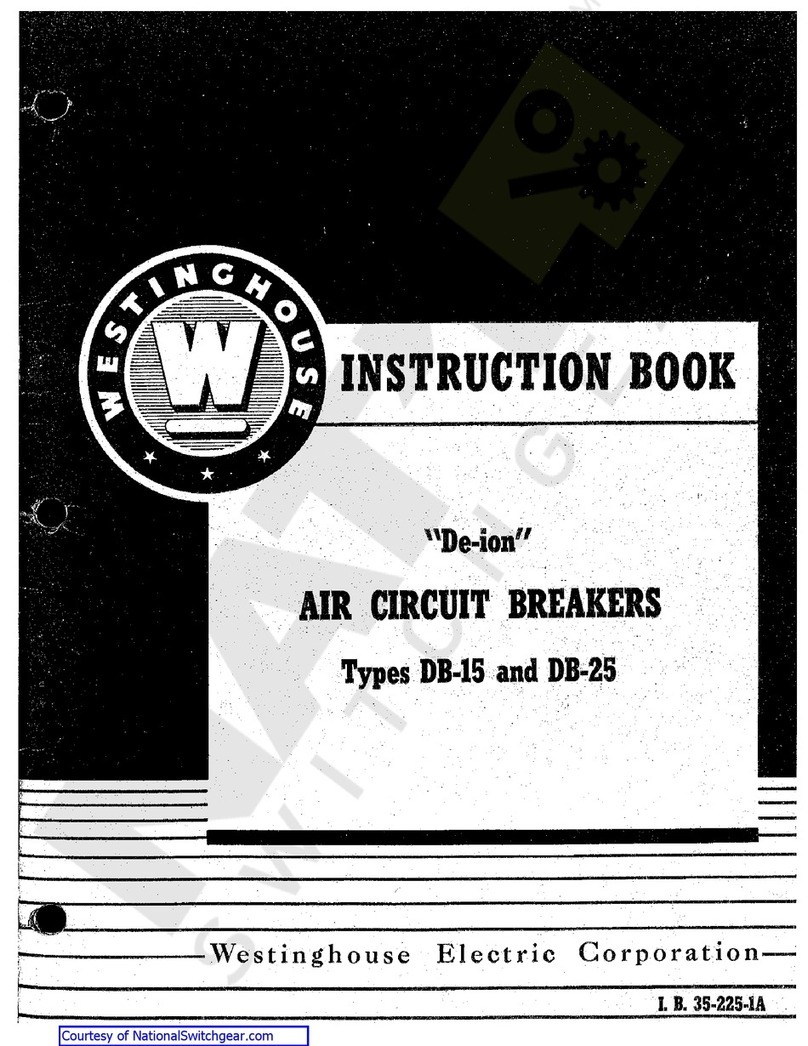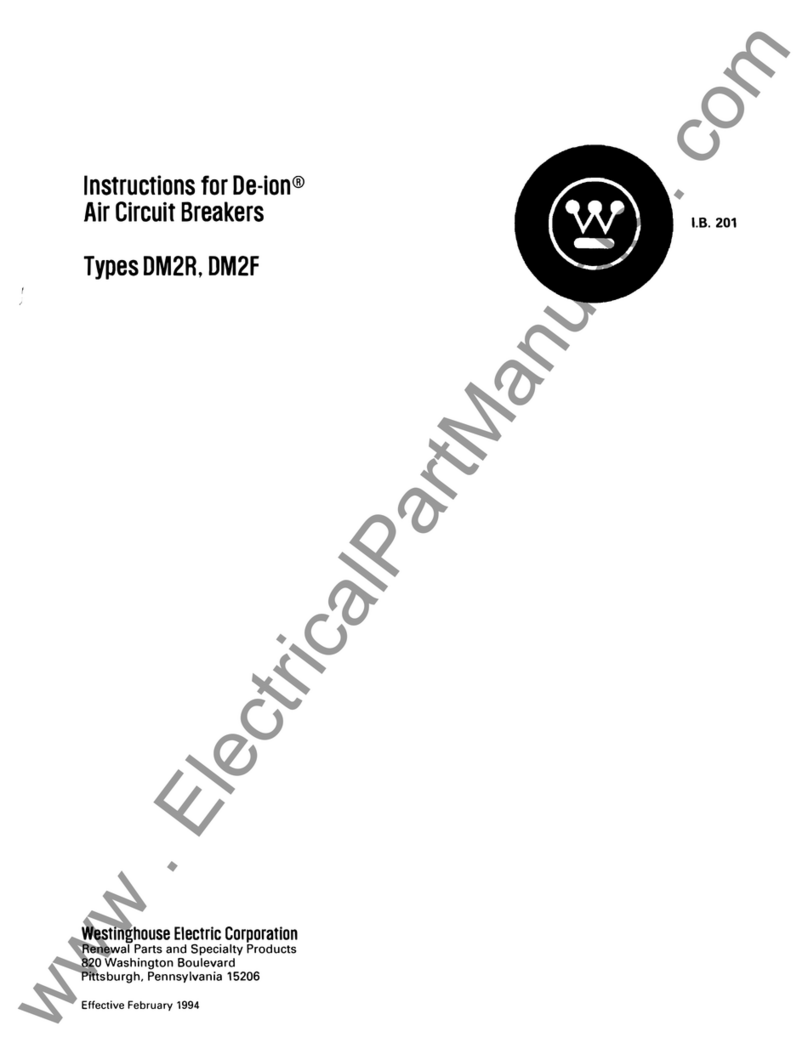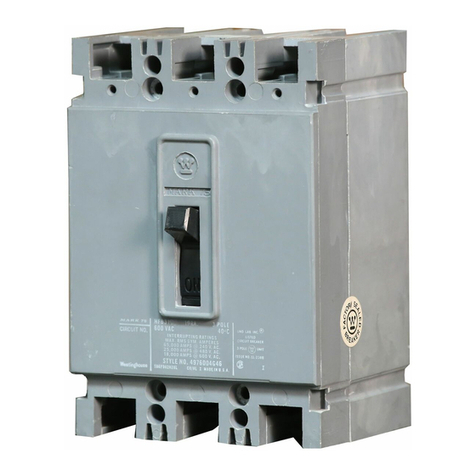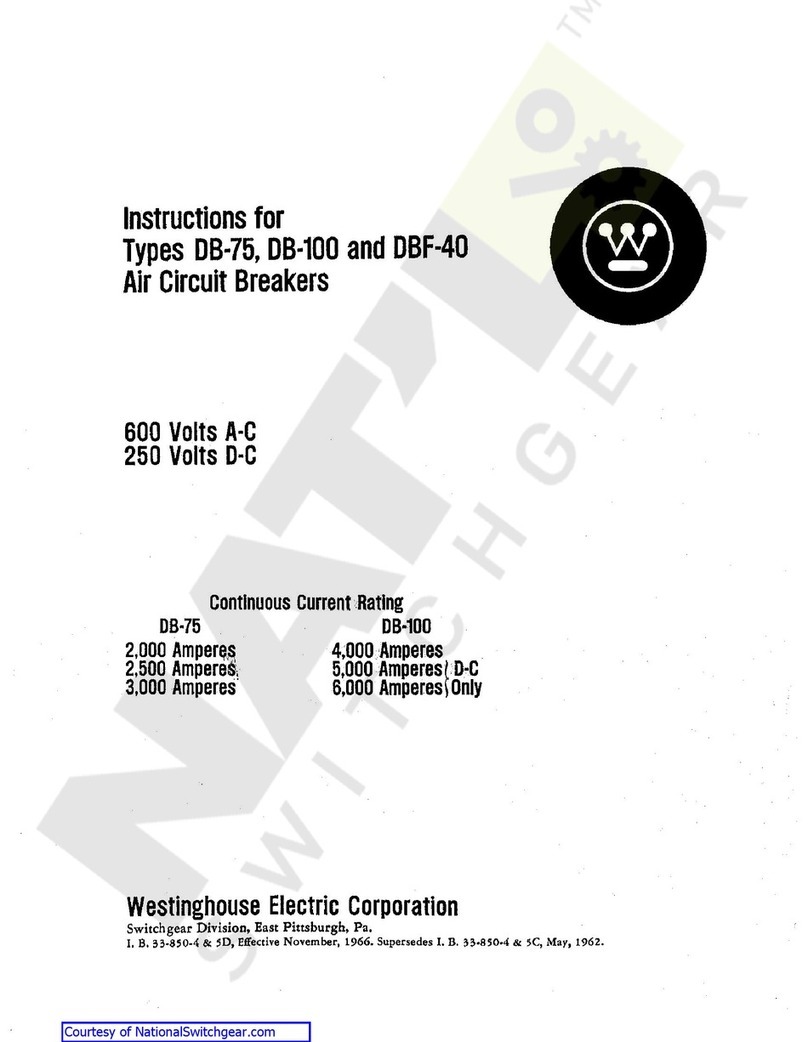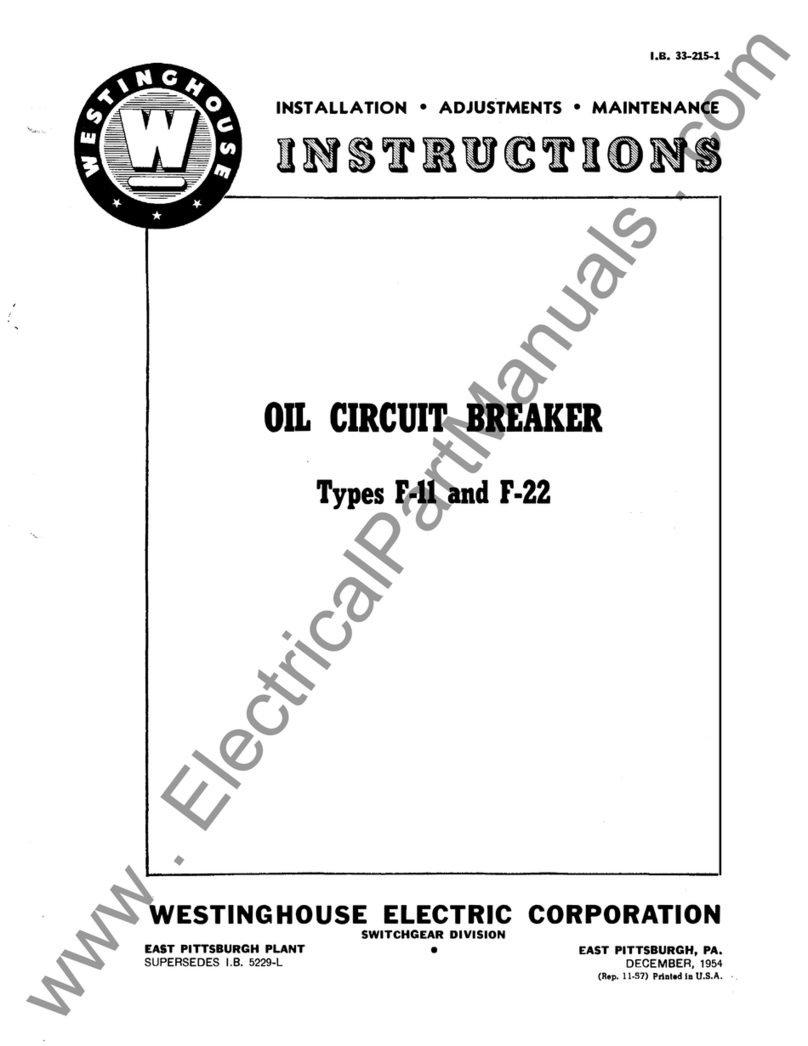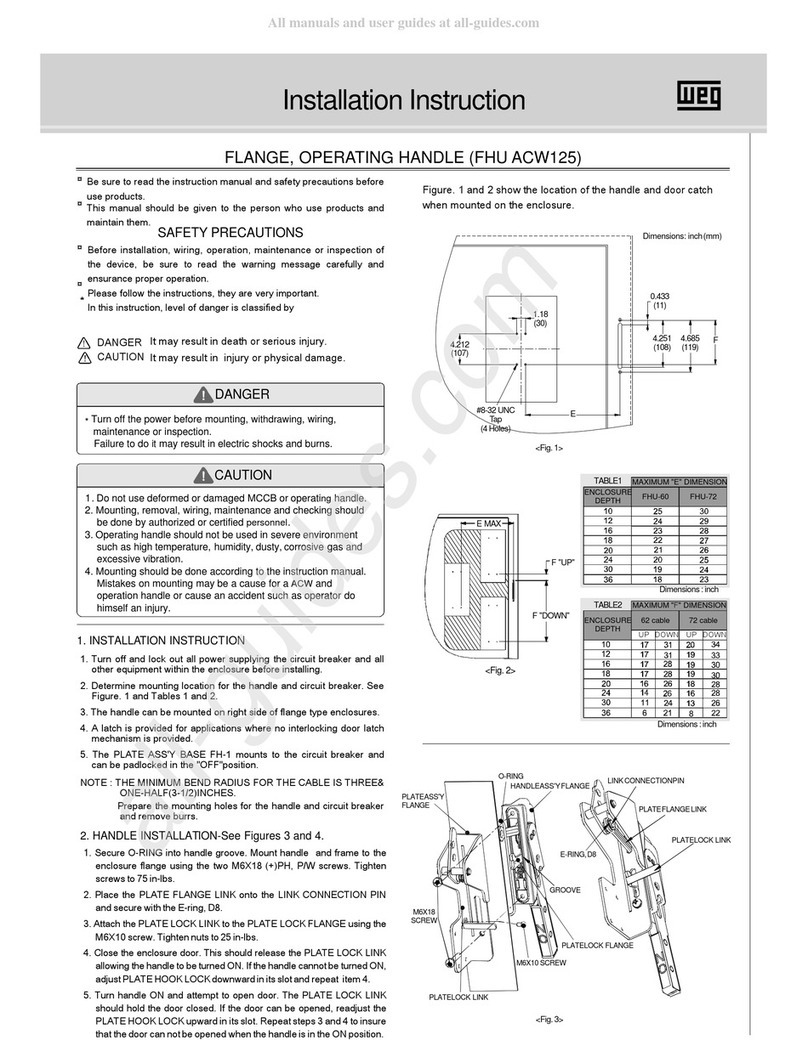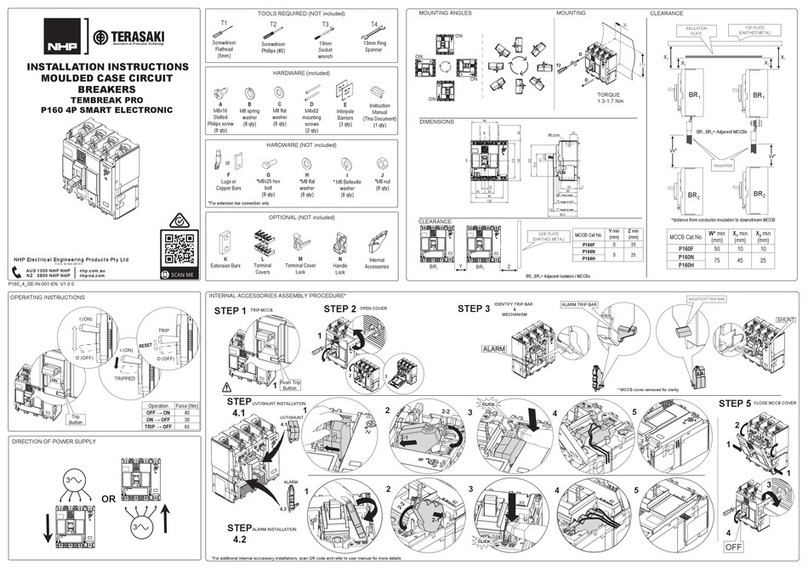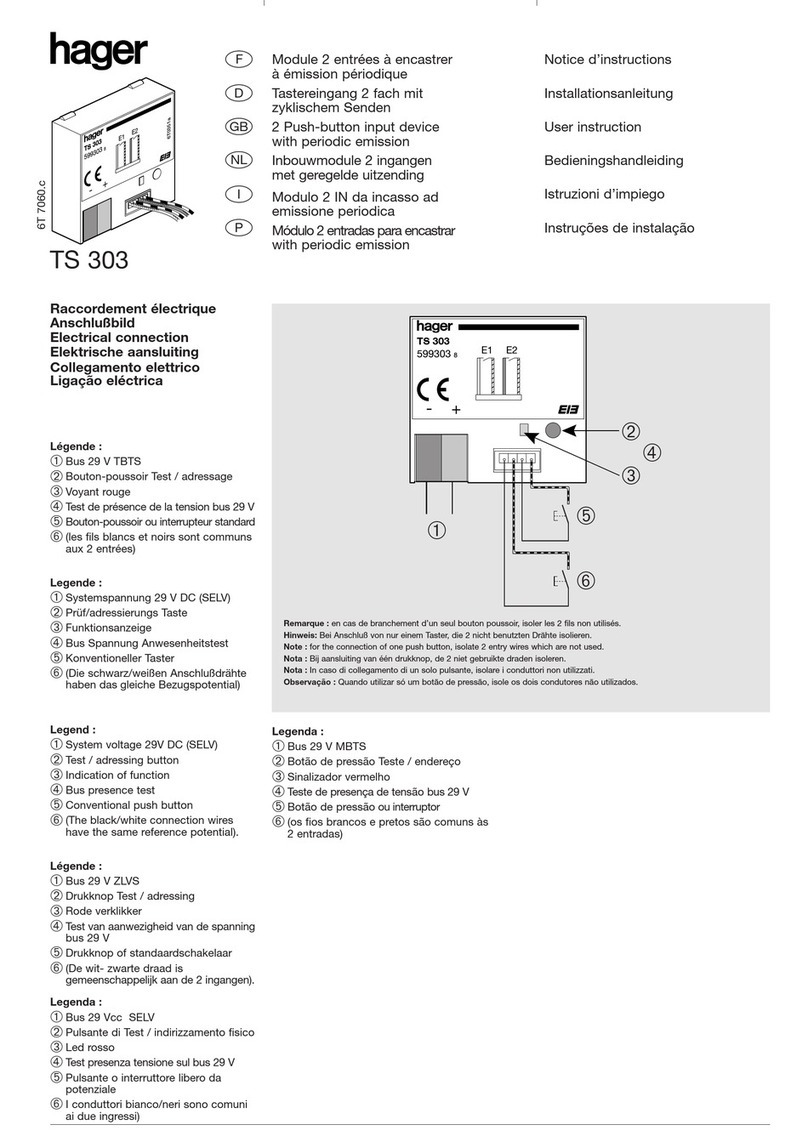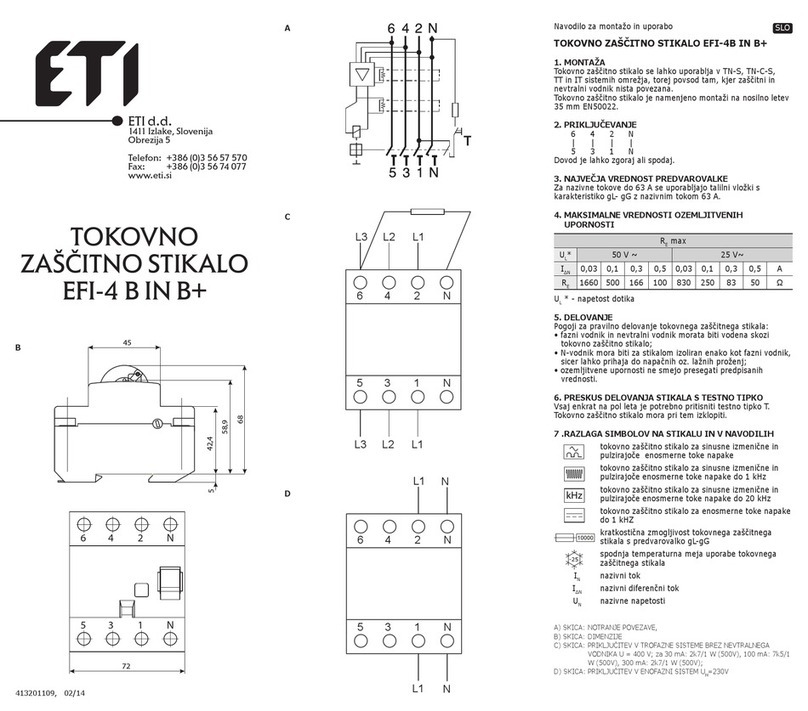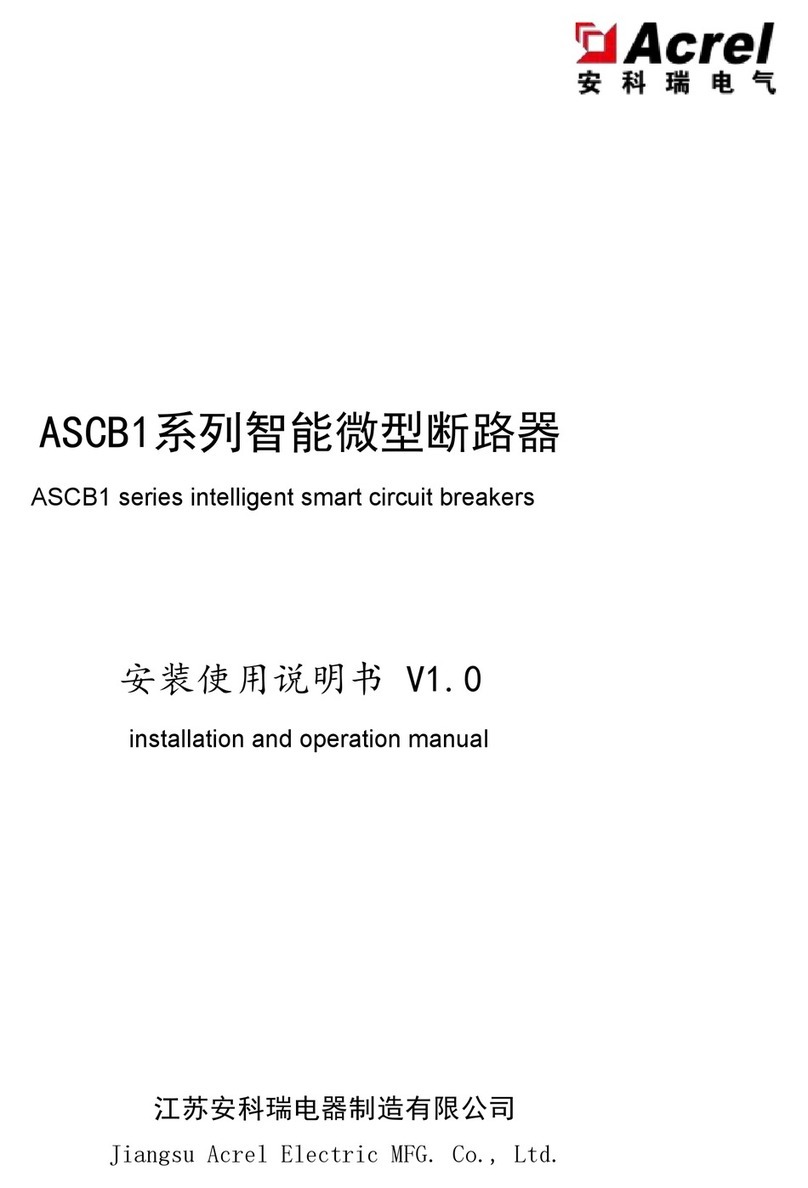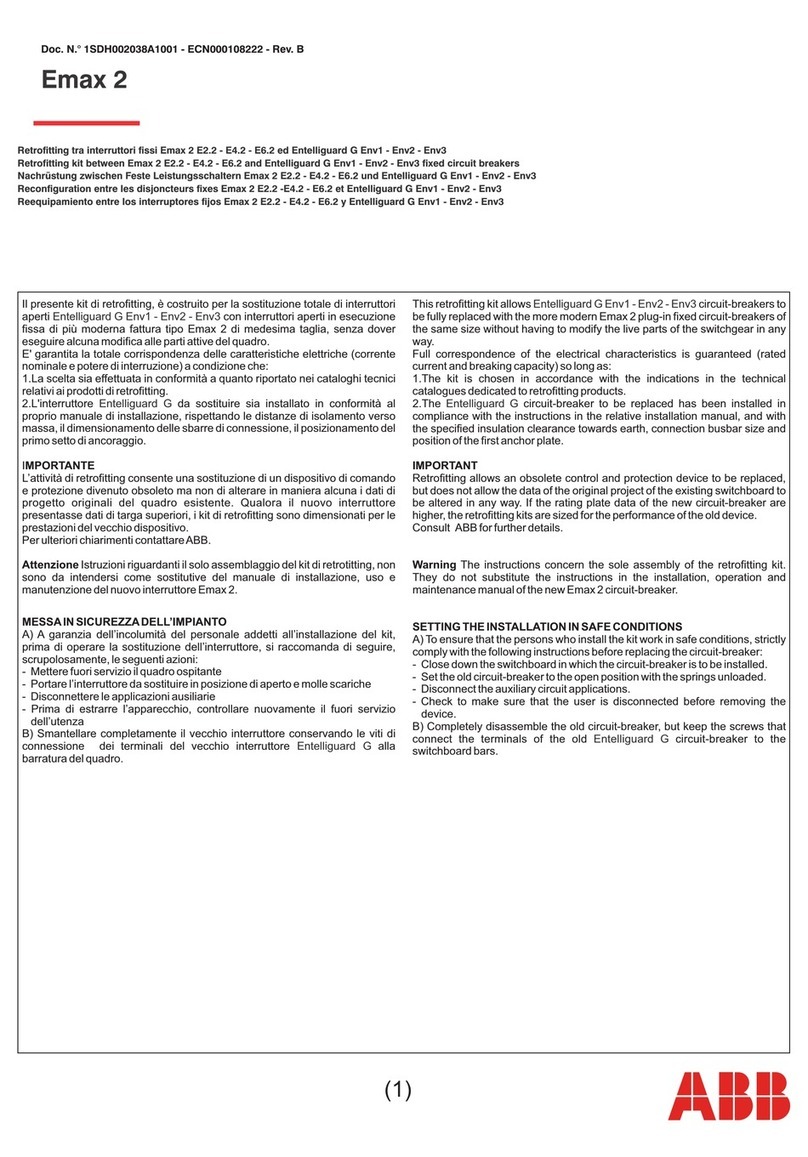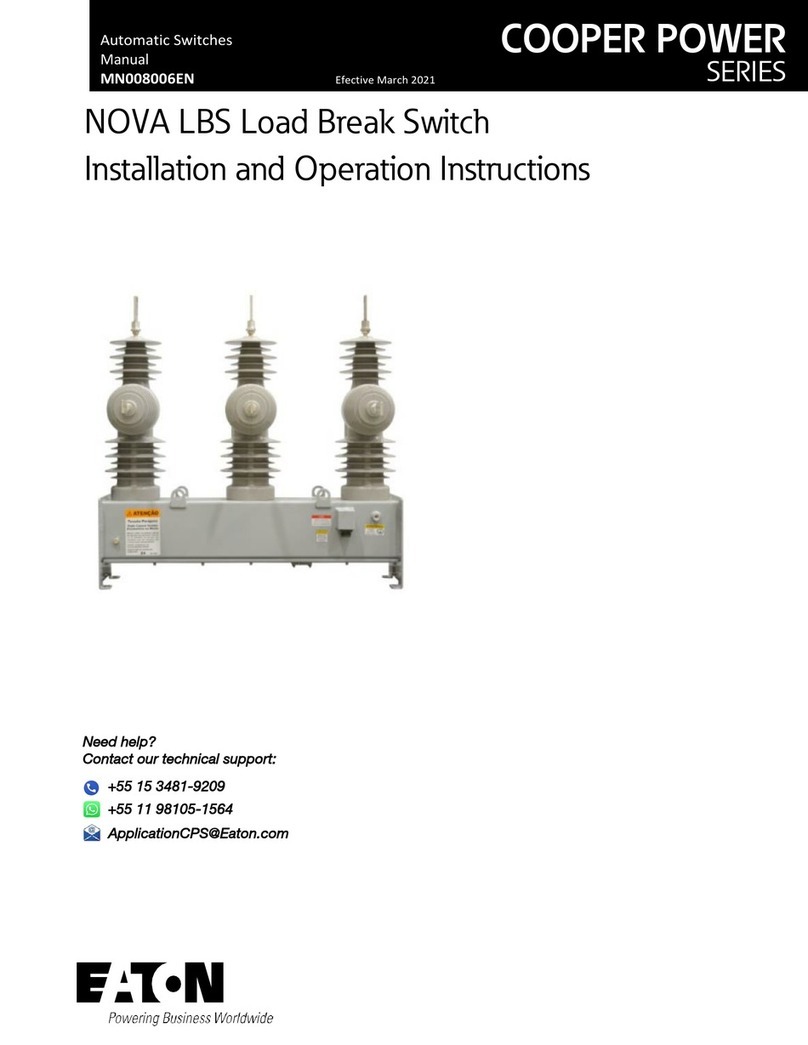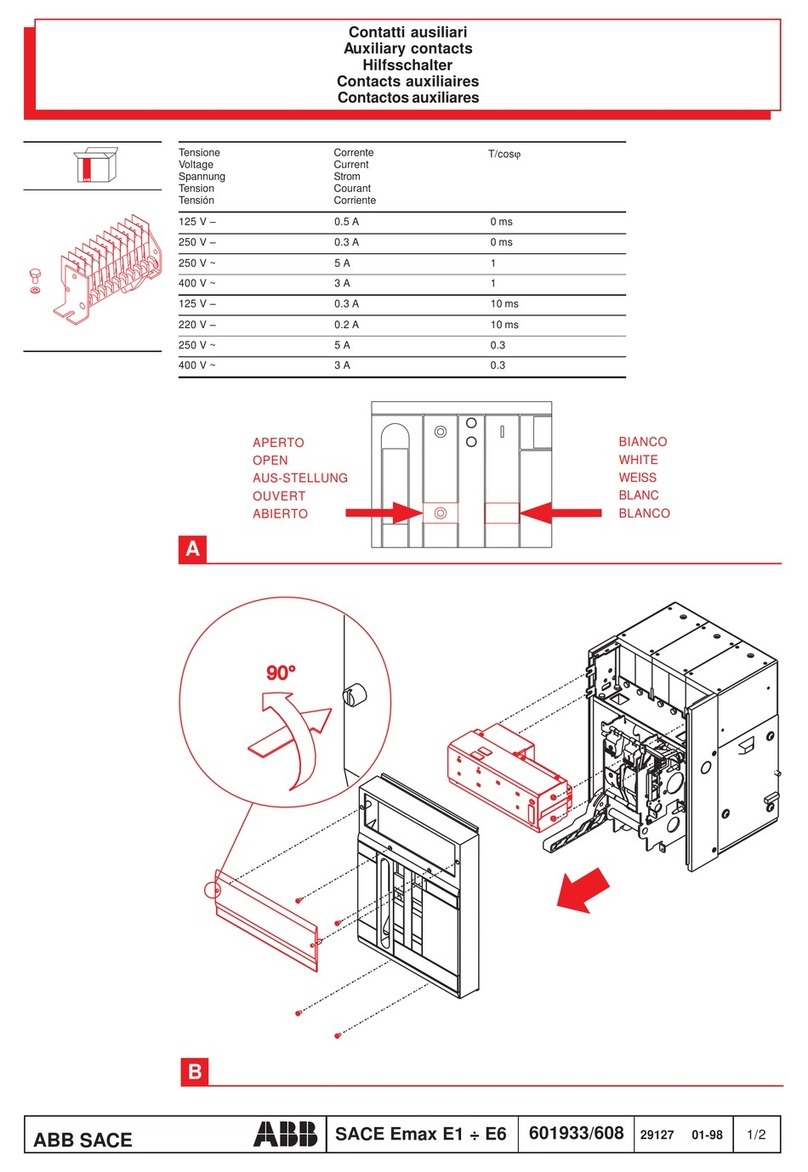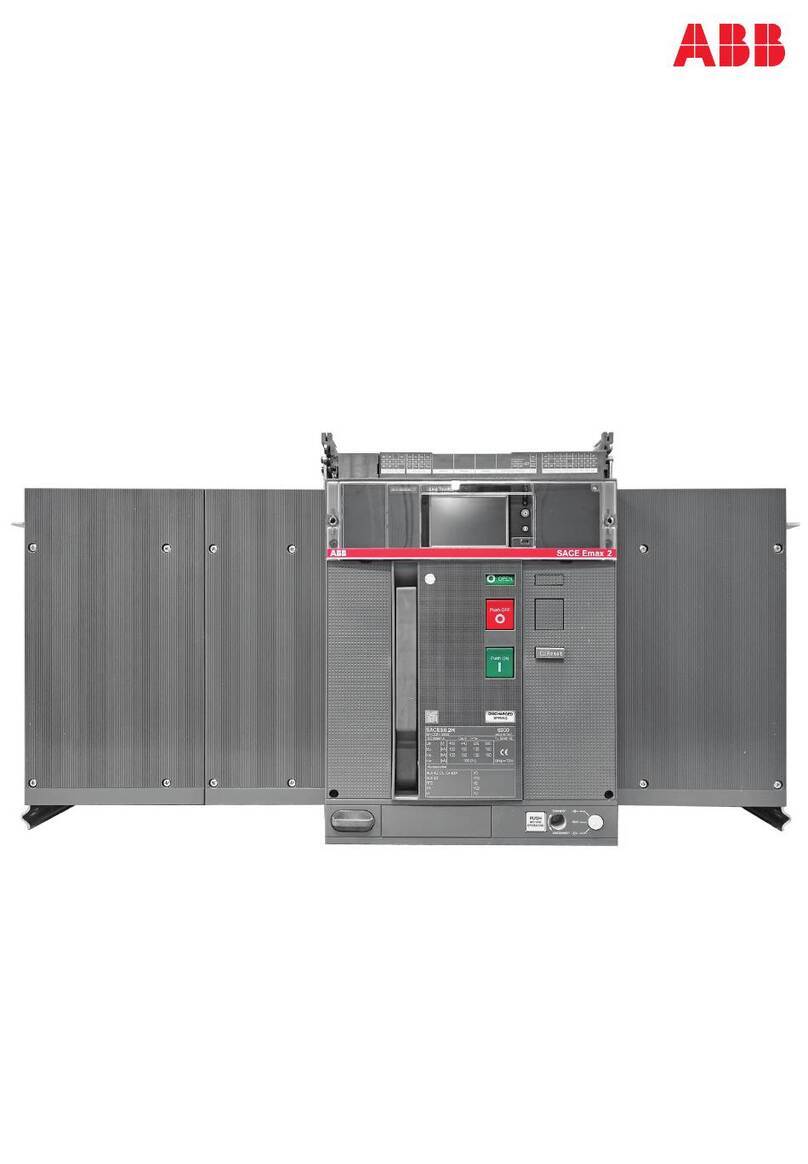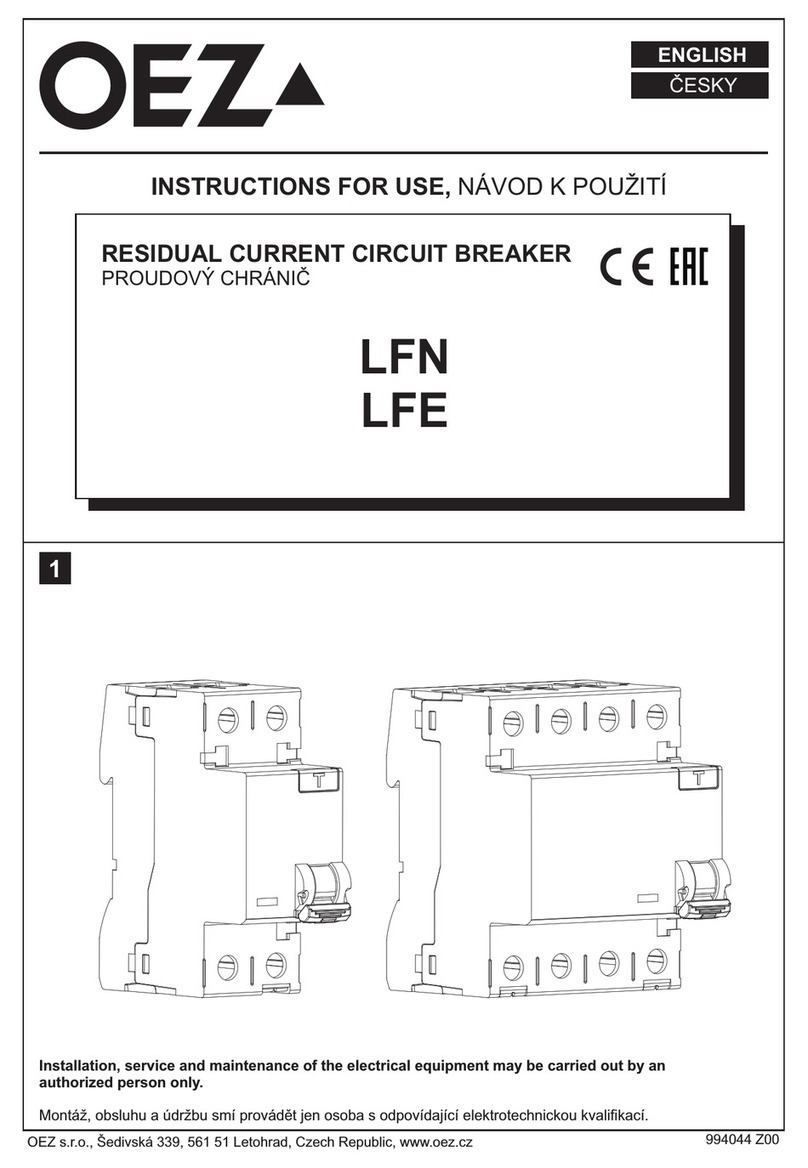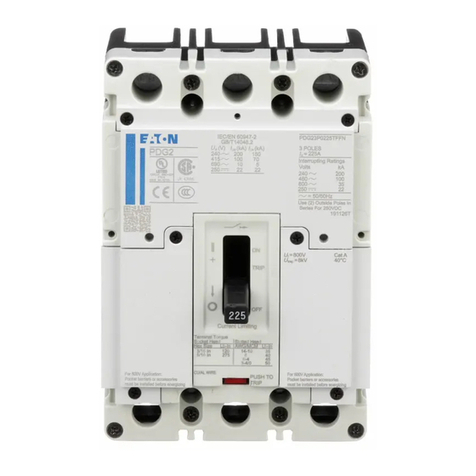
RECEIVING
,
HANDLING
AN
®
STORING
t
/
W
MT
'
KOmtilunvMMUaa
.
t
'
.
wAilisXliasCOKlA
'
.
i
’
.
l
’
)
-
.
X
*
-
41
'
m
*
*
e
-
X
~
'
•
l
-
*
*
"
«
fr
"
'
"
*
1
>
HSKM
*
/
(
i
,
urwuvIJ
.
I
.
!
.
•
-
«
J
w
;
,
.
„
wrl
1
„
with
slings
under
the
orate
.
II
the
breaker
is
to
be
Jilted
with
slings
,
move
it
while
it
is
still
crated
.
Alter
the
breaker
is
unpacked
,
the
best
way
to
move
it
is
by
rolling
it
on
its
own
wheels
,
;
H
it
is
necessary
to
lift
the
breaker
after
if
is
tmcrated
,
lilt
it
without
the
arc
chutes
or
;
barriers
in
,
place
.
Slings
may
be
placed
under
the
!
breaker
frame
.
or
in
holes
provided
in
the
frame
.
!
Use
a
spreader
to
prevent
th
©
cables
from
distorting
the
blowout
magnets
.
STORING
The
arcing
chambers
are
shipped
in
separate
containers
to
guard
against
damage
from
rough
handling
and
for
better
protection
,
from
dust
and
water
or
liquids
,
containers
until
ready
for
us
©
.
Store
all
components
of
these
breakers
in
a
clean
dry
place
..
During
the
storage
period
,
keep
them
sufficiently
warm
to
prevent
'
moisture
condensation
.
Store
them
in
their
shipping
TABLE
©
IP
APPROXIMATE
*
WEIGHTS
(
1
m
Fm
.
radte
)
•
W
'
l
IRMtflu
>
|
i
f
.
»
i
WH
*
4
>
V
1
N
1
»
NIMto
>
l
*
MWti
»
*
4
%
&
*
«
«
>
*
**
uAuvMlxt
'
.
ViKj
i
,
«
,
*
_
*
>
.
;
*
*
»
MU
»
nnrii
»
)
<
=
-
•
»
J
1
l
\
t
-
/
J
>
.
'
On
<
'
h
;
4
t
/
i
.
i
BREAKER
WITHOUT
CHUTE
ft
BARRIER
>
BREAKER
*
SINGIE
m
CHUTE
AMPERE
RATING
BARRIER
ASSEMBLY
COMPLETE
BREAKER
TYPE
80
-
DH
*
150
-
1
)
S
0
-
DH
-
1
S
0
-
D
600
-
1200
2000
676
45
75
1065
1050
45
95
1.260
'
80
-
DH
-
2304
)
50
-
DH
-
250
-
D
1200
875
•
1050
45
75
1085
1280
2000
45
95
1400
75
-
DH
-
250
-
A
75
-
DH
-
500
1200
-
2000
1200
-
2000
•
65
160
1750
2075
1600
105
160
150
-
PH
-
150
-
A
160
«
DH
-
250
-
A
.
150
-
DH
-
250
A
150
-
DH
-
500
-
A
150
-
DH
-
50
Q
-
A
600
-
1200
1200
2000
'
1200
2000
1250
70
'
160
1620
1250
70
160
1620
1770
1928
2075
1400
70
160
1450
105
160
105
1600
160
iMjaattmiwaisiraiwiaitiiiiiafisiBsii
ttvwwnii
Bjouui
.
'
aeww
w
,
i
>
luiMittiMSmvuuiwmtui
^
iausMitfswmJhfctirUMi
^
w
.
UiHtfjiiv
/
.
uiimfcnsiWWiWMMsnaHaiiii
I
*
M
;
«
PH
#
M
«
H
J
;
JMI
IUKI
M
a
*
.
n
sviiiiuiMitm
:
'
*
]
Mummenunai
uu
iMit
*
un
»
tin
iLiflowM
'
iSi
.
'
KiJUiKifeitfxo
i
^
tnui
itursw
*
AIM
*
,
INSTALLATION
With
the
exception
of
the
arcing
chambers
and
barriers
,
these
breakers
are
shipped
completely
{
assembled
and
adjusted
.
No
adjustments
should
be
required
and
none
should
be
made
unless
obviously
needed
.
!
i
When
the
breaker
has
been
removed
from
the
crate
,
remove
braces
which
support
the
blowout
magnet
pole
pieces
during
shipment
,
CmiMmw
Severe
injury
may
be
sustained
if
any
part
of
the
body
is
struck
by
the
con
-
tact
arms
since
they
move
very
rapidly
on
the
opening
stroke
.
Personnel
working
about
the
breaker
should
stay
clear
o
£
the
£
rpaco
in
which
the
contact
arms
move
while
breaker
is
closed
or
is
being
closed
,
.
If
breaker
has
been
closed
by
hand
,
always
remove
hand
closing
lever
before
trippixig
.
The
following
sequence
of
operations
should
be
performed
in
preparing
the
breaker
for
use
:
3
L
Breakers
are
usually
shipped
with
the
con
-
tacts
closed
and
with
a
tie
on
the
trip
lover
to
'
pre
*
grease
.
vent
tripping
.
Alter
the
breaker
is
unpacked
and
the
shipping
lies
and
braces
removed
,
lake
off
the
tie
on
the
trip
lever
and
trip
the
breaker
.
Then
close
the
breaker
carefully
by
hand
,
using
the
removable
hand
closing
lever
.
Make
certain
ilial
all
parts
are
functioning
properly
and
,
that
there
hi
no
binding
or
excessive
friction
.
As
the
contacts
touch
near
the
end
of
the
closing
stroke
,
the
force
necessary
to
close
the
breaker
increases
rapidly
.
2
>
n
With
the
breaker
hi
the
closed
,
position
,
check
the
contacts
to
make
certain
that
the
adjust
-
ments
have
not
been
disturbed
.
Iter
proper
settings
,
refer
to
the
section
of
Fig
.
6
which
matches
the
contact
,
design
of
the
breaker
being
'
installed
,
adjustments
are
required
,
they
may
be
made
as
described
on
page
9
.
,
K
A
light
film
of
grease
hi
applied
,
to
both
the
arcing
and
main
contacts
before
the
breaker
is
operated
at
the
factory
.
This
film
is
normally
removed
before
shipment
.
Before
the
breaker
is
placed
in
service
,
inspect
all
contacts
fence
.
that
they
are
free
oi
oil
or
l
Courtesy of NationalSwitchgear.com
